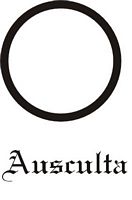|
Historical Studies
Historical Studies has two components: Church History and Classics. Taken together, these components offers both a narrative with which to understand the institutional history of the Church and its missions, and an opportunity for deeper participation in its life through theological reflection.
HI 101: Historical Foundations of Christianity (2 MS)
- When everything is said and done, describe the early origins of Christianity briefly and succinctly.
- Describe the foundation of the Church as a) faith community, b) its early forms of worship, c) organization, and d) discipline.
- Compare your sense of the foundation of Christianity before you began this study with your current sense now that you have investigated just a bit the discussion(s) surrounding the origins of Christianity.
- Describe your sense of a) Jesus; b) Jesus, the Christ; and d) the historical Jesus. With these three senses in heart/mind, discuss your sense of the conventional understanding of who Jesus is; who Jesus, The Christ is; and who the historical Jesus is and how you now relate to each conception thereof.
- Discuss the relevancy of The Historical Foundations of Christianity with The Beatitudes (Matthew 5, 1-12) and 1 Corinthians 12, 31-13, 8.
HI 102: The Early Church to the First Council of Constantinople (2 MS)
- Trace the development of Catholic thought from the Beginnings of Christianity to Gregory of Nazianzus. Discuss how much of this development is found in Scripture itself and how much is the product of the speculative thought of the writer. Include a discussion as to about when the thought stream began to narrow and take root as one ideology.
- Describe your sense how of the person of Christ has changed from the earliest beginnings into yet something else over a brief period of time. Who is the historical Christ and who is the Christ of the Early Church Fathers.
- Discuss the growing of an institutionalized Church from the diverse churches of early Christianity and even the diverse Christian communities within these early churches.
- Discuss the relevancy of The Early Church to the First Council of Constantinople with The Beatitudes (Matthew 5, 1-12) and 1 Corinthians 12, 31-13, 8.
HI 103: From the First Council of Constantinople to the End of the Patristic Era (2 MS)
- Reflecting upon the origins of Christianity, in a brief 500 or so years, describe your sense of the Christian experience. What elements, given speculation, of this experience would the historical Jesus a) recognize and agree with and b) recognize and disagree with, and c) not recognize at all.
- Discuss the effects Augustine has in the institutionalized conception of Christianity. Compare and or contrast these effects with the effects of St. Paul upon the contemporary institutionalized church.
- Listening to the style and tone in the writings of Leo and Gregory the Great, describe the tone found in pronouncements and writings from the institutionalized Roman jurisdiction today.
- Describe what you have learned thus far about the first 500 years of the Christian experience in terms of fact, myth, legend, metaphor.
- Discuss the relevancy First Council of Constantinople to the End of the Patristic Era with The Beatitudes (Matthew 5, 1-12) and 1 Corinthians 12, 31-13, 8.
HI 104: The Middle Ages (2 MS)
- Given the historical background the Dark Ages, discuss the place of guilt, shame, blame and fear amoung the people, encourage by the growing institutional church to control the masses.
- Discuss the place of the monastic spirit that evolved in the Middle Ages. Describe how did this spirit related with the spit of the poeple?
- Discuss who who is Christ has become in the Middle Ages. Describe what the institutional church had become and discuss a growing awareness that institutionalization had little to do with Christ or Christianity.
- Discuss the relevancy the writings of the Middle Ages with The Beatitudes (Matthew 5, 1-12) and 1 Corinthians 12, 31-13, 8.
HI 201: The Reformation and the Council of Trent (2 MS)
- Discuss, given your understanding, what the underlying religious-spsiritual gestalts that lead to many of the people agreeing so whole heartedly with Martin Lathur's position.
- If you were Jesus Christ, discuss how would you have considered what we have labeled the Protestant Reformation, the Counter Reformation, and the Council of Trent — each event occuring supposedly in your name.
- Re-read the Sermon on the Mount. Compare and contrast the language sense contained in the Council of Trent decrees with that in the Sermon on the Mount. What conclusions do you make?
- Discuss the relevancy the writings of the Reformation and the Council of Trent with The Beatitudes (Matthew 5, 1-12) and 1 Corinthians 12, 31-13, 8.
HI 202: Modern Church History (2 MS)
- Earth houses pluralistic society. Discuss the purpose for a religion (as differientated from spirituality Cf Religion and Spirituality: Unity in Difference) in general, and a Catholic tradition specifically, in today's society.
- Given the history of the Catholic experience, relate a Catholic Spiritualilty with a Contemporary Catholic.
- In the world today, describe various conceptions of Jesus and how elements within a society may act in His name. Discuss cognitive dissonance and its relation to a) differing conceptions of Jesus, b) church, c) morality (death penalty, abortion/anti-abortion <Right to Life/Right to Choose>, self-determination/assisted suicide) conversations, marriage relations (husband-wife as equals to wife being obedient to husband).
- Given your historical understanding of Jesus and Church, describe your understanding of Jesus and Church and relate your unstanding to each of the points covered in the Sermon on the Mount
- Discuss the relevancy the writings of Modern Church History with The Beatitudes (Matthew 5, 1-12) and 1 Corinthians 12, 31-13, 8.
|

